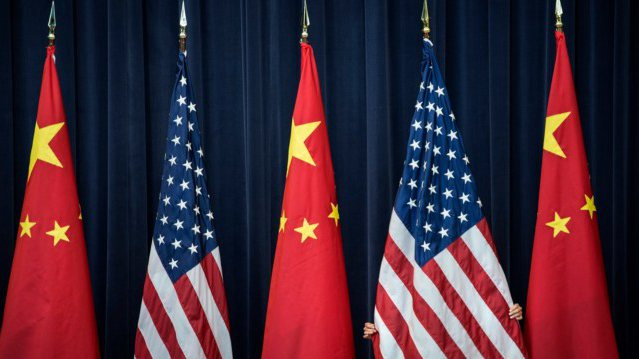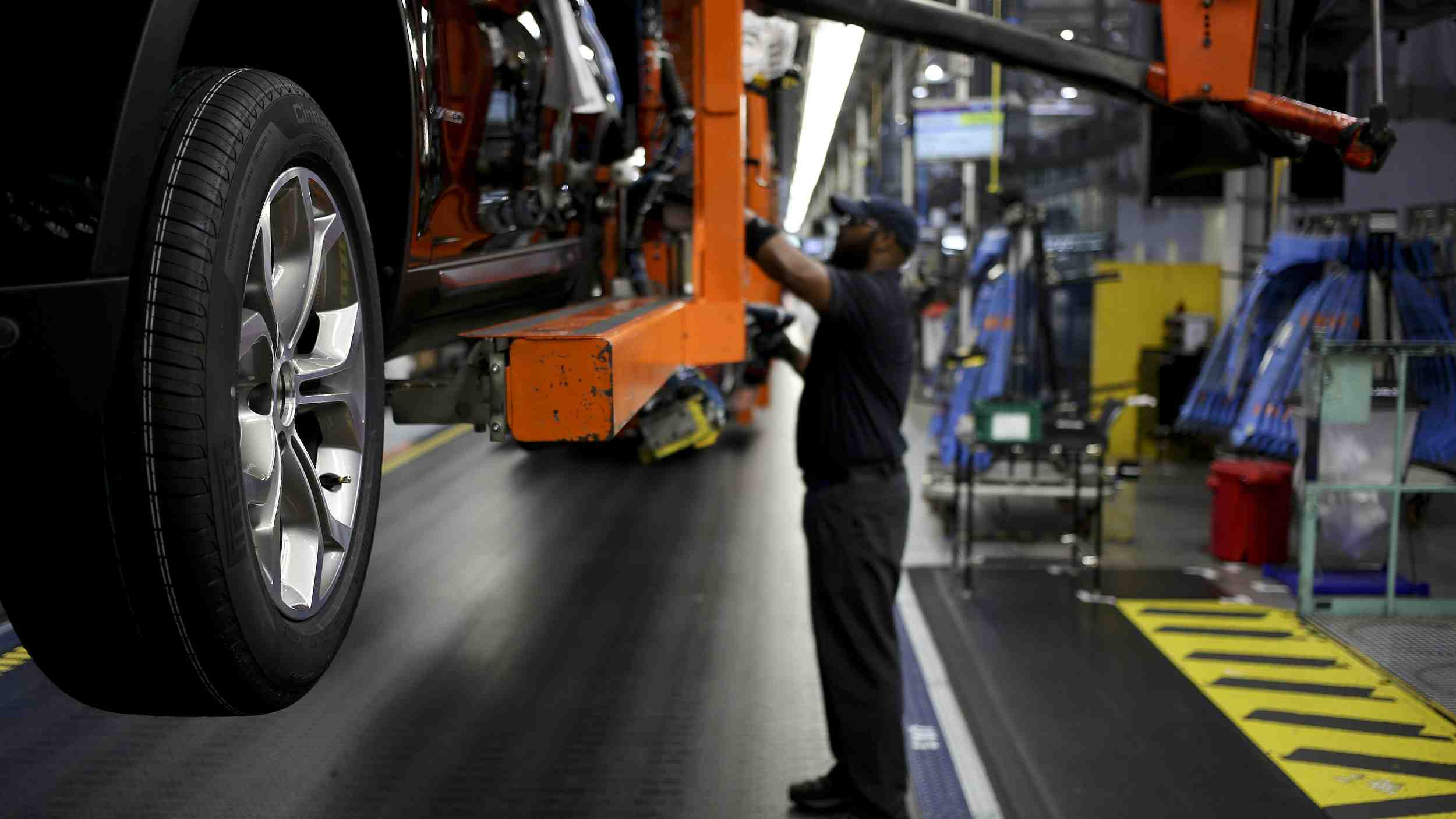
Opinion
20:29, 11-Jun-2019
Myths and facts about Sino-U.S. trade frictions: Manufacturing reshoring

Editor's note: This is an edited translation from an editorial initially published on Qiushi in Chinese on June 10. The article reflects the author's opinion, and not necessarily the views of CGTN.
In the early days of the current U.S. administration, it put forward the policy guideline of "buying American goods and employing American workers" and engaged in promoting the "reshoring of the manufacturing industry."
U.S. politicians gave preferential policies to companies that set up factories in America, while for companies that closed down U.S. factories and set up factories abroad, they put up additional tariffs to force them to return to America.
Can such protectionist practices really bring about “manufacturing reshoring” to the United States?
First of all, it's necessary to first look at what causes the outsourcing of U.S. manufacturing. From the perspective of the U.S. domestic economy, outsourcing is determined by the intrinsic needs of its economic development.
Since the 1980s, the process of economic globalization has accelerated significantly under the joint impetus of the information technology revolution and trade and investment liberalization.
In order to achieve maximum profits, U.S. multinationals have transferred more and more industries to developing countries. Through such a process, they have reduced costs, expanded markets, transferred pollution, and improved capital returns.
At the same time, more and more capital has evaded the real economy which generally had low-profit margins and turned to the financial sector to engage in financial speculation, leading to the hollowing out and virtualization of the U.S. economy.

An auto manufacturing workshop in the U.S. /VCG Photo
An auto manufacturing workshop in the U.S. /VCG Photo
In view of U.S. relations with foreign economies, the outsourcing of U.S. manufacturing is closely linked to America's special role in the world economic system.
In the existing international economic system, as the world currency, the U.S. dollar occupies a dominant position. A world economic system based on U.S. dollar operates in the following way.
The U.S. supplies dollars while other countries, especially Asian countries including China, supply physical products. The U.S. imports a large amount, resulting in a trade deficit, while other countries export a large amount, resulting in a trade surplus. Under such circumstances, the U.S. needs other countries to hold enough dollars for trading in order to consolidate the dollar's position as a world currency.
Only when the U.S. has a persistent trade deficit can it stably export dollars to its trading partners. This means that the reshoring of U.S. manufacturing may erode the dominance of the U.S. dollar, which is an important reason why it is difficult for the U.S. manufacturing businesses to return.
In fact, in 2018, manufacturing added value accounted for only 11.4 percent of American GDP, while banking, insurance, real estate and leasing accounted for 20.7 percent. The deindustrialization and financialization were even more serious than in 2007.
Obviously, it is not easy to achieve the reshoring of the U.S. manufacturing industry.
The U.S. government's policy of "manufacturing reshoring" also violates the rule of the international division of labor. At present, the pattern of the global value chain has led to the complex division of labor in the manufacturing systems of countries in the world.

VCG Photo
VCG Photo
The U.S. has no cost advantage in most middle- or low-end manufacturing segments. In contrast, China has not only a cost advantage in many manufacturing segments, but many other comparative advantages such as skilled workers, production clustering, infrastructures, supply chain, market, etc.
For example, in terms of the labor force, according to a report released by Deloitte and the American Manufacturers Association, the labor shortage in the U.S. manufacturing industry will rise from two million to 2.4 million in the next decade, and for some jobs, it may even double.
The shortage of skilled workers may affect 17 percent of the manufacturing output in the United States. Such a shortage is likely to push up the wages of U.S. manufacturing workers, thus increasing the labor costs of U.S. manufacturing.
Therefore, forcing companies to move their factories back to the United States will actually damage the competitiveness and profitability of American companies.
Recently, there have been some media reports about the reshoring of the U.S. manufacturing industry. However, given the huge volume of U.S. manufacturing, individual cases do not suffice in reversing the trend.
For example, Foxconn's announcement in 2017 that it would set up a factory in Wisconsin was widely touted as a resounding “political success.” However, two years on, Foxconn has changed its plan again and again and has been unable to deliver on its promises.
A close look at the manufacturing data reveals the failure of Trump's reshoring plan for the manufacturing industry.

Wisconsin Governor Scott Walker (2nd L), U.S. President Donald Trump (C), Foxconn Chairman Terry Gou (2nd R), Speaker of the House Paul Ryan (R) and an official (L) participate in a groundbreaking for a Foxconn facility at the Wisconsin Valley Science and Technology Park in Mount Pleasant, Wisconsin, June 28, 2018. /VCG Photo
Wisconsin Governor Scott Walker (2nd L), U.S. President Donald Trump (C), Foxconn Chairman Terry Gou (2nd R), Speaker of the House Paul Ryan (R) and an official (L) participate in a groundbreaking for a Foxconn facility at the Wisconsin Valley Science and Technology Park in Mount Pleasant, Wisconsin, June 28, 2018. /VCG Photo
Judging from the industrial production index which measures the real production output of industrial products in the United States, after seasonal adjustment, the growth rates of both the industrial sector and the manufacturing sector have been in the negative territory since 2019, down by 1.2 percent and 1.6 percent respectively from the end of 2018.
Moreover, the capacity utilization rates of the industrial sector and the manufacturing industry, which measure the prosperity of the industry, are 77.9 percent and 75.7 percent respectively, which are lower than the trending average of 79.8 percent and 78.3 percent from 1972 to 2018.
Therefore, regardless of some individual cases, the U.S. manufacturing industry as a whole has not grown stronger under trade protectionism.
The global division of labor in the manufacturing industry is an extension of socialization of production in the world and is an inevitable trend led by productivity growth. Although this trend may be perturbed by the policies of some countries, it cannot be reversed.
At present, the U.S. government tends to create trade frictions by resorting to additional tariffs and high trade barriers, and to coerce American multinationals to return to the U.S. by labeling them as traitors and threatening to increase taxes if they refuse. It will not achieve the desired results.
With the development of economic globalization, Chinese and American companies are highly integrated into the industrial supply chain and value chain, and the increase in tariff is bound to be transmitted from Chinese companies to their American counterparts, hence increasing the costs of the latter.
Moreover, the tariff hikes will seriously damage the global value chain, impact the global allocation of resources, cause widespread negative spillover effects, and reduce the efficiency of the global economy.
(If you want to contribute and have specific expertise, please contact us at opinions@cgtn.com.)

SITEMAP
Copyright © 2018 CGTN. Beijing ICP prepared NO.16065310-3
Copyright © 2018 CGTN. Beijing ICP prepared NO.16065310-3